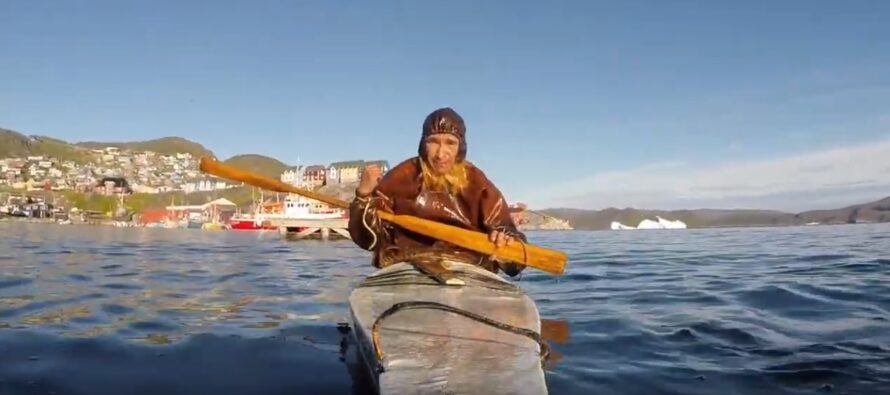Greenland: The Greenlandic kayak or ‘qajaq’

NordenBladet – The kayak was a necessity of the Inuits who from an early age learnt to handle this craft. It is still used for fishing but also used for recreation and for races.
THE HISTORY AND DEVELOPMENT OF THE KAYAK
The kayak – or ‘qajaq’ as it is called in Greenland – is an invention from old days that has been an essential piece of hunting equipment for Inuits in Greenland and the rest of Arctic North America.
The kayak has been used in connection with sealing, whaling and fishing, and it was common for Greenlandic boys to spend their childhood learning to keep their balance and manoeuvre the kayak.
Today the traditional ‘qajaq’ is still seen in many towns and especially at the annual kayak meeting but for recreational kayaking the more robust sea kayaks made of fibreglass have gradually taken the place of the traditional versions.
TRADITIONAL HUNTING FROM THE KAYAK
The kayaks were adapted to the waters in which they were used, and there is therefore a great variation in terms of both the kayak’s design and construction method.
Earlier the kayak was covered with sealskin from which the hair had been removed, but today they are primarily constructed with a nylon or canvas outer skin.
In Greenland’s hunting districts such as at Qaanaaq there is still a requirement that whaling for narwhals must take place in the traditional manner – i.e. from a traditional qajaq with hand-thrown lances and spears – despite the fact that it is of course more effective to hunt with rifles and camouflage.
GREENLANDER ROLL
The cold Arctic seas could be lethal, as could the weather too. It was therefore essential that the hunter was properly prepared by being dressed in a waterproof animal skin suit and by always being able to execute the so-called ‘Greenlander roll’.
From early childhood, the hunters therefore learnt and practised countless turns and rolls in the sea by means of their small oars in the event that they should suddenly capsize or turn over.
In this way they could get out of almost all critical situations.
THE CONSTRUCTION OF THE KAYAK
Building a kayak was a job for both men and women. The man was responsible for the kayak frame, and the kayak was shaped precisely to his own body shape and not according to standard dimensions.
The kayak construction itself consisted in former times of driftwood which was carried by the currents from Siberia’s rivers to the east and west coasts of Greenland.
The women’s job was to sew the fabric together from 3-4 skins of the harp seal, which was stretched out over the frame – a perfect collaboration that created kayaks from which modern kayak designers still find inspiration.
Featred image: YouTube (Minik Dahl Høegh)
 High quality & nature friendly luxury cosmetics from Scandinavia - ElishevaShoshana.com
High quality & nature friendly luxury cosmetics from Scandinavia - ElishevaShoshana.com

